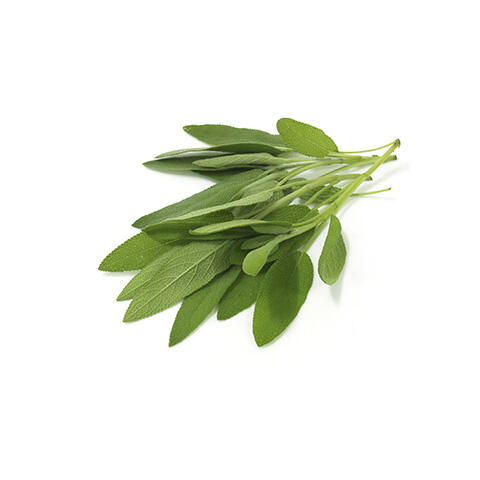You are here
Sage

Markon First Crop (MFC) Sage has strong earthy overtones, lending a savory flair to meals for pennies per plate.

Product Details
Shelf Life:
Julian pack date.
Storage Temperature:
38°-42°F (4°-6°C)
Ethylene Producing:
No
Ethylene Sensitive:
Yes
Kosher:
No
Available Offerings from Markon for Sage
| Description | Net Weight | Pack | GTIN | UPC |
|---|---|---|---|---|
| Sage | .50 pounds or .23 kilograms | .50 LB | 0 06 11628 92620 9 | 6 11628 92620 9 |
| Sage | 1 pounds or .45 kilograms | 1 LB | 0 06 11628 92610 0 | 6 11628 92610 0 |
| Sage | 1 pounds or .45 kilograms | 2/.50 LB | 1 06 11628 92622 0 | 6 11628 92622 3 |
| Sage | .25 pounds or .12 kilograms | .25 LB | 0 06 11628 92630 8 | 6 11628 92630 8 |
Storage Tips:
Keep in original containers; store at proper temperatures; keep away from ethylene producing items.
Handling Tips:
Handle as little as possible to reduce bruising and premature spoilage; do not wash until ready to use. Rinse whole fruits and vegetables in clean running water prior to using.
General Usage Ideas
- Accent pumpkin cake with sage-lemon ice cream.
- Lightly fry butternut squash-potato-sage latkes; serve with sage apple butter.
Fall / Winter Usage Ideas:
- Boil MFC Potatoes and parsnips; mash with olive oil, cream, and finely minced sage; serve with roast beef
- Sauté trout with butter, sage, and almonds; deglaze with sherry and garnish with fried sage leaves
- Season holiday turkeys with a mixture of oregano, sage, and rosemary; stuff skin with butter, sliced MFC Lemons, RSS Peeled Garlic; roast and serve with mashed sweet potatoes
Spring / Summer Usage Ideas:
- Add minced sage and hazelnuts to sautéed Brussels sprouts; serve with grilled poultry
- Layer roasted MFC Mushrooms, goat cheese, and escarole in a buttered baking dish; top with grated Parmesan and minced sage; bake until cheese is melted and browned on top
- Toss cooked penne pasta with steamed MFC Asparagus, peas, sage, and cream sauce; garnish with pancetta crisps
Did You Know?
Herbs are one of the oldest agricultural products. Egyptian records from as early as 2800 B.C. mention their role in food, medicine, cosmetics, perfumes, dyes and magic.


